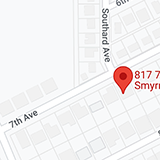For many of my clients, a significant portion of their net worth is part of a retirement account. Estate planning for those individuals involves planning for the disposition of those retirement assets; however, the focus of an “estate plan” all too often centers on a Will and perhaps a Living Trust, with the retirement assets attracting less attention. This discussion will explore the estate planning options for retirement benefits.
Retirement assets present a special opportunity to significantly benefit my clients.
Definition of “Retirement” Assets
These are assets held in an account for the benefit of a participating employee—something with a balance that “belongs” to the employee. Types of retirement assets include:
- Qualified plans (401k)
- IRAs
- Roth IRAs
- 403(b) plans
- 457 plans
Retirement assets have features which require special handling in the estate planning context.
They are non-probate assets. It is possible, and often preferable, to designate a beneficiary who will receive the assets in the account upon the participant’s death. Transfer of ownership using a beneficiary designation avoids probates of these assets, and in this way, retirement assets are similar to life insurance policies and joint accounts. However, passing benefits in this way often has unintended consequences.
Examples:
- A beneficiary might be a minor or too young to be responsible with money
- A beneficiary might have financial problems, or a spouse with financial problems
- A beneficiary might have marital problems
- A beneficiary might be disabled
- A beneficiary might be sued
- A beneficiary might be a second spouse and the client wants to guarantee that the assets will pass to his or her children after the second spouse dies.
Remember, there are Income Tax Considerations. Retirement assets have not been subjected to income tax—contributions were made on a pre-tax basis, and earnings were accumulated, tax-free. As such, the retirement account provides a protective tax shelter for the assets held inside the account, until their distribution.
Distributions from the account to the participant generally are taxable as ordinary income. That income tax treatment does not change upon the participant’s death. Distributions from the account to the participant’s beneficiary also will be taxable as ordinary income.
Often, a major objective in estate planning is to ensure that shelter from taxation remains intact for as long as possible; i. e., to defer the taxation over a longer period of time. This is commonly known as the “stretch out” tax treatment. And the funds, with proper management, continue to grow over the years, tax-free.
The Favorable “Stretch Out” Tax Treatment is Easy to Achieve
In order for a beneficiary to receive the favorable “stretch out” tax treatment after the death of the owner, the designated beneficiary must be an individual (not a charity or the estate of the deceased, for example), whose birth date and life expectancy will determine how long the stretch out period can last. However, a designated beneficiary need not be specified by name – it is sufficient if the beneficiary or beneficiaries are identifiable; and we must be able to identify the beneficiaries by a certain deadline after the participant’s death.
The Trust as a Designated Beneficiary
The simplest way to ensure there is a designated beneficiary for the account is to name only individuals as the beneficiaries of that account. However, there may be unintended consequences, or the possibility of unforeseen circumstances; thus many of my clients are reluctant to entrust significant assets to an individual beneficiary, and would feel more comfortable having those assets pass to a Trust, to be held for the benefit of that individual, or group of individuals, typically their children or grandchildren.
My law firm is experiencing an increase in the number of clients who love their children, but do not trust their children’s spouses; as well as second marriages where the wealthier spouse wishes to provide income for the new spouse, but wants the assets to revert back to their own children after the death of the new spouse.
It is not difficult to accomplish this goal. In order to qualify as a designated beneficiary, a Trust must have the following characteristics:
- The Trust is valid under state law.
- The Trust is irrevocable, or by its terms, becomes irrevocable upon the participant’s death.
- The beneficiaries of the Trust must be individuals and must be identified by September 30th after the year of death.
- Certain documentation must be provided to the plan administrator (a copy of the Trust and a list of all beneficiaries, including contingent and remainder beneficiaries)
If those requirements are met, the Retirement Benefits Trust will qualify as a designated beneficiary.
Conclusion
There are many good reasons to leave retirement benefits to a Trust. If you think that a Retirement Benefits Trust might be beneficial; please do not hesitate to contact this law firm for specific legal advice.


